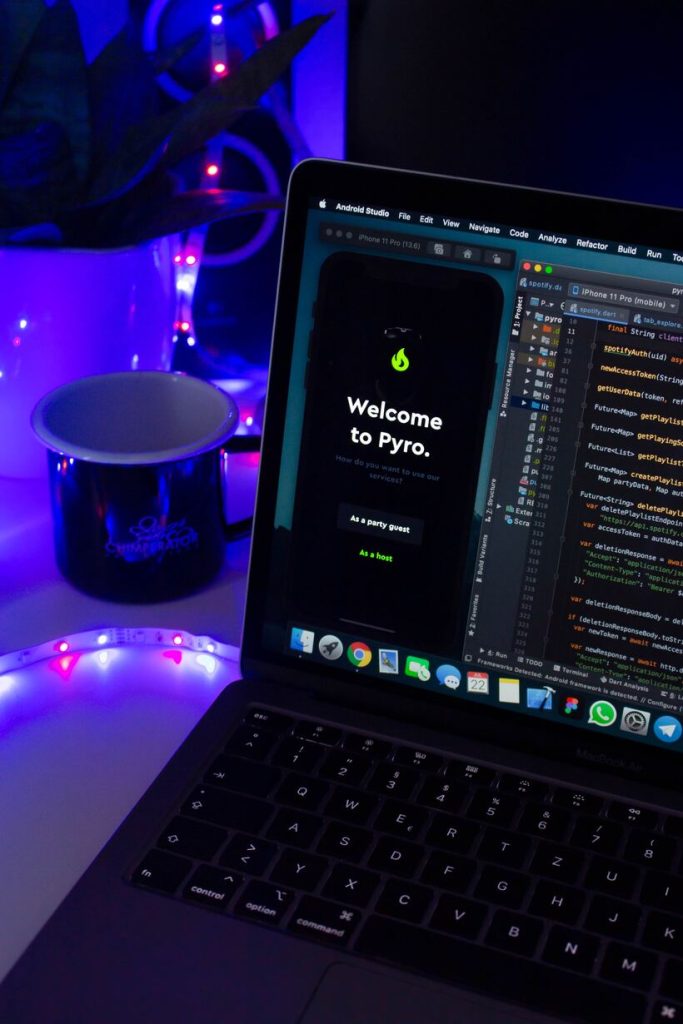Welcome to the world of HR, where adaptability and resilience reign supreme! In today’s ever-evolving business landscape, organizations must be agile to stay ahead of the curve. And who plays a crucial role in building these agile and resilient organizations? You guessed it – Human Resources!
Gone are the days when HR was solely responsible for recruitment and employee benefits. Now, HR professionals have become catalysts for change, driving innovation, fostering continuous learning, and supporting organizational transformation. They are at the forefront of creating cultures that thrive on agility and resilience.
So buckle up as we dive into how HR is shaping the future by building sustainable and adaptable organizations. Get ready to explore strategies for hiring agile employees, cultivating a culture of continuous learning, and supporting change management initiatives. Let’s unlock the secrets behind HR’s role in creating an environment where companies can thrive amidst uncertainty!
The Importance of Adaptability and Flexibility in Today’s Business Landscape
In today’s fast-paced and ever-changing business landscape, adaptability and flexibility have become crucial qualities for organizations to thrive. The ability to quickly respond to market shifts, technological advancements, and changing customer demands is what sets successful companies apart from the rest.
Adaptability allows businesses to embrace change rather than fear it. It enables organizations to stay ahead of the curve by constantly evaluating their strategies and making necessary adjustments. This agility ensures that they can capitalize on new opportunities as they arise while minimizing risks associated with outdated practices or products.
Flexibility goes hand in hand with adaptability. It involves being open-minded, willing to explore new ideas, and embracing innovation. Flexible organizations are not tied down by rigid structures or processes; instead, they encourage creativity and experimentation among their employees.
By fostering a culture of adaptability and flexibility within an organization, HR plays a vital role in driving success. They must identify individuals who possess these characteristics during the hiring process and establish development programs that nurture these skills in existing employees.
HR should promote continuous learning initiatives that encourage employees at all levels to acquire new knowledge and skills relevant to their roles. This helps ensure that teams remain agile in the face of evolving challenges.
HR professionals also play a critical role in supporting change management initiatives within an organization. They need effective communication channels with employees so that any changes are clearly communicated from top leadership down through all levels of the company.
Building adaptability into an organization’s DNA requires ongoing effort from HR professionals in collaboration with other departments across the company. By prioritizing agility and resilience as core values within the workforce, businesses can position themselves for long-term success amidst uncertainty.

Understanding the Key Components of an Agile and Resilient Organization
Agile and resilient organizations are the need of the hour in today’s fast-paced and ever-changing business landscape. But what exactly makes an organization agile and resilient? Let’s dive in to understand the key components that contribute to these qualities.
Agility requires a flexible organizational structure with decentralized decision-making. This allows for quick responses to changing market conditions and customer needs. It also promotes a culture of innovation, where employees feel empowered to take risks and experiment with new ideas.
Effective communication is crucial for agility and resilience. Open lines of communication enable rapid information sharing across teams, departments, and hierarchical levels. This facilitates collaboration, problem-solving, and adaptation in real-time.
Continuous learning is essential for staying ahead in today’s dynamic environment. A learning mindset encourages employees to develop new skills, embrace change, and seek out opportunities for growth. Organizations can foster this by providing training programs, mentorship initiatives, or even allocating time specifically dedicated to personal development.
Another important component is a focus on customer-centricity. Agile organizations prioritize understanding their customers’ evolving needs so they can deliver value-added products or services quickly. By regularly gathering feedback from customers through surveys or other means of research methods helps ensure that products align with customer expectations.
Since we are living in an era driven by technology advancements it becomes pivotal for organizations to nurture a digital mindset as well.
HR’s Role in Hiring and Developing Agile Employees
Hiring the right employees is crucial for building an agile organization. HR plays a vital role in this process by identifying candidates who possess the necessary skills, mindset, and adaptability to thrive in a dynamic work environment.
When recruiting for agility, HR should focus on assessing not just technical expertise but also traits like resilience, problem-solving ability, and willingness to embrace change. By utilizing innovative selection methods such as behavioral interviews or assessment centers, HR can gain deeper insights into candidates’ agility potential.
Once hired, it is essential to develop these agile employees further. HR can facilitate this through various initiatives such as training programs that promote collaboration, adaptability workshops that enhance flexibility and decision-making skills, or cross-functional projects that encourage learning from different perspectives.
Fostering a culture of continuous learning within the organization is crucial. Providing opportunities for professional growth and upskilling helps employees stay relevant in an ever-evolving business landscape. HR can leverage tools like e-learning platforms or mentorship programs to support ongoing development journeys.
HR should create platforms for knowledge-sharing and collaboration among employees across departments. This enables the exchange of ideas and best practices while promoting innovation throughout the organization.
By hiring individuals with agile mindsets and investing in their development journey through continuous learning initiatives, HR plays a pivotal role in building organizations equipped to navigate today’s rapidly changing business landscape.
Strategies for Creating a Culture of Continuous Learning and Innovation
Creating a culture of continuous learning and innovation is essential for organizations that want to thrive in today’s fast-paced business landscape. It requires HR professionals to adopt strategic approaches that encourage employees to embrace new ideas, develop their skills, and stay ahead of the competition.
One strategy is to provide regular training opportunities for employees. By offering workshops, seminars, and online courses, HR can empower individuals to acquire new knowledge and enhance their capabilities. This not only benefits the organization but also shows employees that their growth and development are valued.
Another effective tactic is fostering collaboration and cross-functional teams. Encouraging employees from different departments or backgrounds to work together on projects promotes diverse thinking, sparks creativity, and encourages innovative solutions. This approach allows individuals with different skill sets to learn from one another while also establishing a sense of shared purpose within the organization.
Creating an environment where risk-taking is encouraged rather than punished can drive innovation. HR can support this by recognizing and rewarding creative thinking, even if initiatives don’t always succeed as planned. By embracing failures as opportunities for learning and growth, organizations can create a safe space for experimentation without fear of negative consequences.
Implementing feedback mechanisms such as regular performance evaluations or anonymous suggestion boxes allows employees at all levels to contribute ideas for improvement. HR should actively seek input from staff members regarding processes or procedures they believe could be enhanced or streamlined.
Promoting a mindset of lifelong learning throughout the organization has significant benefits. Encouraging employees to take ownership of their own professional development through self-study or attending industry conferences fosters continuous growth both personally and professionally.
How HR can Support Change Management Initiatives for a More Resilient Organization
Change management is a critical aspect of building a resilient organization. It involves effectively navigating through transitions and ensuring that employees are equipped to adapt to new ways of working. HR plays a crucial role in supporting change management initiatives and fostering resilience within the workforce.
One way HR can support change management is by facilitating clear communication channels throughout the organization. This involves keeping employees informed about upcoming changes, addressing their concerns, and providing them with resources to navigate through the transition.
HR can also play an active role in identifying potential resistance to change and developing strategies to overcome it. By conducting thorough assessments of the organizational culture and employee attitudes, HR can help leaders understand where resistance may arise and develop targeted interventions to address these challenges.
HR can support change management efforts by providing training programs that enable employees to develop the necessary skills for adapting to new technologies or processes. These programs could include workshops on agile methodologies, digital literacy training, or leadership development programs aimed at building resilience skills.
HR can collaborate with leaders from different departments or teams to create cross-functional project teams for implementing organizational changes. By bringing together individuals with diverse skill sets and perspectives, these teams can drive innovation while minimizing disruption during periods of change.
HR should continuously monitor the progress of change initiatives and gather feedback from employees along the way. This will allow them to make necessary adjustments as needed and ensure that any barriers hindering successful implementation are addressed promptly.
HR’s involvement in change management is essential for creating a more resilient organization. Through effective communication, proactive identification of resistance points, training programs, collaboration across functions,and continuous monitoring, HR professionals have the power to guide organizations towards successful adaptation.
By embracing their role as agents of positive transformation, HR professionals contribute significantly
to building an agile workforce capable of thriving in today’s ever-changing business landscape.
The Crucial Role of HR in Building Sustainable and Adaptable Organizations for the Future
Building sustainable and adaptable organizations for the future is an ongoing challenge in today’s rapidly evolving business landscape. In this endeavor, HR plays a crucial role in ensuring the success of organizational agility and resilience.
By recognizing the importance of adaptability and flexibility, HR can effectively hire and develop agile employees who are capable of navigating through uncertainty and change. By fostering a culture of continuous learning and innovation, HR can create an environment where individuals are encouraged to embrace new ideas and approaches.
HR can support change management initiatives by facilitating effective communication, providing training programs, and implementing strategies that promote employee engagement during times of transformation.
The ability to build agile and resilient organizations lies with HR. Through their strategic efforts in hiring talent, fostering a culture of innovation, supporting change management initiatives, they contribute significantly to creating sustainable organizations that can thrive amidst challenges.



No Comments
Leave a comment Cancel